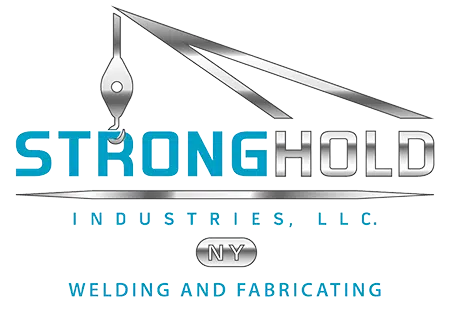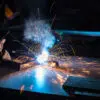History of Sheet Metal Fabrication
History of Sheet Metal Fabrication
Sheet metal is all around us whether we notice it or not. The process of sheet metal fabrication involves pressing or shaping pieces of metal into thin, flat sheets ranging in a variety of thicknesses for a variety of different purposes.
Many kinds of metals can become sheet metal, including gold, silver, aluminum, brass, copper, steel, nickel, titanium, and platinum, to name a few. Without sheet metal, the modern world as we know it would look very different. We use sheet metal for construction, aircraft parts, automobiles, tools, and more. Sheet metal is responsible for the evolution of civilization. But it’s not a modern technology or skill.
As it turns out, humans have been engaging in sheet metal fabrication in one way or another for thousands of years.
Ancient Sheet Metal Fabrication
That’s right. Sheet metal fabrication traces its roots all the way back to the ancient Egyptians. Our ancient ancestors were manually hammering natural metals such as gold, silver, and copper into jewelry between 5,000 B.C. and 4,000 B.C. The process involves overlaying these metals into sheets using primordial furnaces and then pounding them into shape. Other civilizations began utilizing these skills and the process as well. Even Roman artifacts are evidence of sheet metal fabrication in the ancient world.
Sheet metal fabrication made its mark in ancient warfare when the Greeks began shaping it into plate armor for cavalry. Soon, other militaries would adopt the idea and integrate it into their own forces. Throughout the Middle Ages in Europe, kingdoms had to utilize sheet metal fabrication to create armor and weapons, giving us the knights of lore that have been romanticized ever since, not to mention a new kind of warfare that has been advancing technologically.
The Rolling Mill and Leonardo da Vinci
The fabrication process saw dramatic changes once Leonardo da Vinci drew sketches of an invention known as the rolling mill in 1485. By 1501, rolling mills began to replace primordial furnaces.
The rolling mill works by passing metal in between two rollers, reducing the thickness of the metal as it passes through. This made metalworking far more convenient while allowing metalworkers to create a uniform thickness for specific items they were making. While it didn’t replace the need for hammering, the rolling mill made the work less intensive.
Cast Iron
The invention of the rolling mill increases the demand for metal products of all kinds, resulting in a need to produce products more quickly at a less expensive cost. Though it has been around for centuries, cast iron is generally brittle and the process was used to make cannonballs. In 1707, Abraham Darby patents a process of making pots and kettles thinner. Using less raw materials, Darby’s coke-smelting method makes the fabrication of metal products cheaper for the masses. By 1717, the method paves the way for more complex shapes to arise and helps lead to the golden age of metalworking that built our modern world.
Industrial Revolution
Starting in 1760, the Industrial Revolution saw a boom in the sheet metal fabrication industry as new metalworking technologies and production strategies came into being. Inventions such as the hydraulic press in 1770 and the hot blast furnace in 1828 sped up metal production. Machine tools such as the lathe, the milling machine, and the cylinder bore machine gave rise to precision metal parts. All of these tools are still in use today in metalworking shops and factories.
-
Hydraulic Press
The hydraulic press is a machine that uses a hydraulic cylinder to create compressive force. There are many applications of this revolutionary technology. It creates intricate shapes via punching, forging, clinching, molding, and blanking metal materials.
-
Hot Blast Furnace
Hot blasting involves the preheating of air that is then blown into a blast furnace. It cuts down on fuel consumption and also resulted in higher heating temperatures.
-
Lathe
A lathe is a machine that allows a metalworker to take a piece of metal and rotate it at speed while manipulating or shaping it in some form. Using this method allows the metalworker to create symmetrical shapes.
-
Milling Machine
Milling machines are multitask cutting tools that metalworkers use to remove material from metal pieces.
Bessemer
As the Industrial Revolution grew, so did steel production. In 1857, Henry Bessemer patented a process to mass-produce steel from molten pig iron through oxidation. This steel production technique gained popularity in the United States, where Bessemer steel was used to manufacture railroad rails across the country. The basic oxygen furnace would replace Bessemer’s process over 100 years later in 1960.
World War II
Shortages of metal were prevalent in the 1940s because of the war effort, with most metals going toward the production of aircraft, bullet cases, tanks, rifles, ships, and more. Yet another boom in the demand for metal products would occur after the war, which sheet metal fabrication played a major part in winning.
Bending
Any history of sheet metal fabrication would not be complete without mentioning a process known as bending. Bending involves the use of machining tools to create V-shapes, U-shapes, and channel shapes in sheet metal. Products the bending process produces include electrical boxes and ductwork.
Sheet Metal Fabrication Today
The sheet metal fabrication industry continues to enjoy fast growth, especially as demand for metal products increases.
It’s an industry worth over $20 billion annually with more than 4,500 fabrication shops in the United States alone. Just about any metal product that you own is the result of sheet metal fabrication and thousands of years of trial and error, success and failure, new inventions and processes, and the skills and knowledge of metalworkers.
Stronghold Industries offers sheet metal fabrication services in Westchester County, Dutchess County, Putnam County, and the New York Metropolitan area. We have the expertise and the skill to complete your metal fabrication project. Call us today at 914-235-8220 or visit our website. Our machine and fabrication shops produce auto parts, railings, beams, columns, plates, buckets, grapples, plows, pistons, cylinders, bushings, pins, and more.
Sheet metal fabrication is an important part of human history. It’s also an important part of Stronghold Industries and our millwrights, welders, blacksmiths, and ironworkers are ready to take care of your metal fabrication needs.




